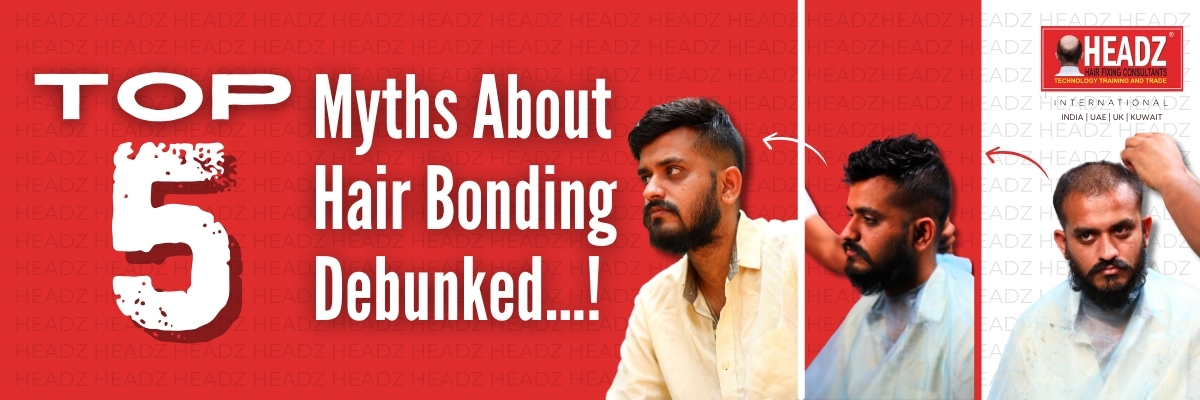Top 5 Myths About Hair Bonding Debunked

- headz
Hair bonding has emerged as a popular non-surgical solution for individuals experiencing hair loss or thinning. However, despite its growing popularity, misconceptions about this procedure often deter people from exploring its benefits. In this blog, we aim to debunk the top myths about hair bonding and provide clarity to those considering this option.
Myth 1: Hair Bonding Damages Natural Hair
One of the most common misconceptions about hair bonding is that it damages your natural hair. In reality, hair bonding is a safe and non-invasive process when performed by experienced professionals. The adhesive used is skin-friendly and designed to cause no harm to your scalp or existing hair.
Fact: Proper maintenance and periodic removal by a trained expert ensure that your natural hair remains unaffected. Choosing a reputed clinic or salon for the procedure is essential to avoid any risks.
Myth 2: Hair Bonding Looks Fake and Unnatural
Many people believe that hair bonding results in a fake or unnatural appearance. However, modern hair bonding techniques use high-quality hair patches that closely resemble natural hair in color, texture, and density.
Fact: With the help of advanced customization, experts can tailor the hair patch to match your natural hair seamlessly, ensuring a realistic and undetectable look.
Myth 3: Hair Bonding is Painful
A prevalent fear is that the hair bonding process is painful. This myth likely stems from confusion with surgical hair restoration methods.
Fact: Hair bonding is a completely painless and non-surgical procedure. It involves attaching the hair patch using a medical-grade adhesive or tape, causing no discomfort during or after the process.
Myth 4: Hair Bonding is Only for Bald People
Another misconception is that hair bonding is only suitable for individuals with complete baldness. On the contrary, it is a versatile solution that caters to various levels of hair loss.
Fact: Hair bonding works effectively for people with thinning hair, patchy bald spots, or receding hairlines. It can also be used as a temporary enhancement for those looking to improve their appearance.
Myth 5: Hair Bonding Requires High Maintenance
Some people avoid hair bonding because they think it involves complex and expensive maintenance routines. While hair bonding does require care, it is manageable and not as daunting as it seems.
Fact: Basic steps like regular cleaning, avoiding harsh chemicals, and following expert advice are sufficient to maintain your hair patch. Scheduled maintenance sessions at the salon ensure durability and longevity.
Benefits of Hair Bonding
Now that we have debunked these myths, let’s explore some of the undeniable benefits of hair bonding:
- Non-Surgical: No cuts, stitches, or downtime.
- Instant Results: Immediate improvement in appearance.
- Customizable: Tailored to suit individual preferences.
- Affordable: Cost-effective compared to surgical alternatives.
- Reversible: Easily removable if needed.
FAQs About Hair Bonding
1. How long does a hair bonding patch last?
The lifespan of a hair patch depends on the quality of the material and how well it is maintained. On average, a high-quality patch can last 6-12 months with proper care.
2. Can I wash my hair normally after bonding?
Yes, you can wash your hair, but it’s important to use mild, sulfate-free shampoos and follow the care instructions provided by your stylist.
3. Is hair bonding suitable for women?
Absolutely! Hair bonding is a versatile solution that works for both men and women experiencing hair loss or thinning.
4. Will the adhesive cause allergies or irritation?
Medical-grade adhesives used in hair bonding are hypoallergenic. However, it’s always advisable to do a patch test beforehand.
5. Can I swim or exercise with a bonded hair patch?
Yes, hair bonding is designed to withstand activities like swimming and exercising. Ensure proper maintenance and use water-resistant adhesives for better results.
